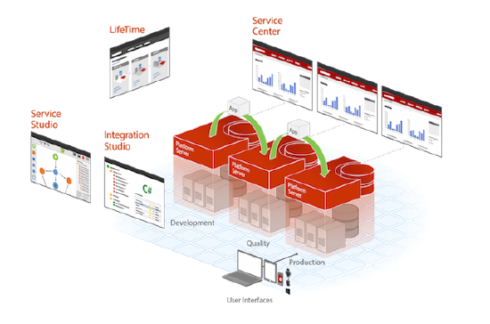
OutSystems announced 70 development accelerators designed to ensure web and mobile applications created on the OutSystems low-code development platform can comply with the highest accessibility standards and regulations.
“Building apps with great accessibility is a legal responsibility, but more importantly, it is a moral responsibility for app developers to ensure that everyone can perceive, navigate, and interact with your website or mobile app to get the services and products they need,” OutSystems wrote in a blog post.
The new accessibility capabilities also include fully-customizable accessible interfaces and a Live Style Guide that allows organizations to create an accessible Design System that meets their unique brand guidelines and allows the easy reuse of branded components across platforms.
Solo.io developer portal for Istio service mesh
The new Istio service mesh accelerates the developer onboarding experience and API management with enhanced security.
With the new solution, organizations can catalog, manage, and securely publish APIs to a custom-branded portal that accelerates onboarding for developers inside and outside their organization.
Highlights of the Istio developer portal also include OpenAPI Spec and gRPC Support, declarative configuration, enhanced security, API rate limiting on APIs, as well as custom branding.
Fuze 6 launched for digital transformation and business continuity
Fuze 6 includes enhancements across user experience, API accessibility, platform extensibility, and next-gen Fuze Contact Center and Fuze Meetings experiences.
“At Fuze, we are continuously innovating to make sure our technology not only meets enterprises where they are on their digital transformation journey, but also provides a secure, scalable, and integrated experience to compete in the rapidly evolving digital economy,” said Jed Brown, the senior vice president of product and design at Fuze.
The updated version includes updates to the backend services architecture, an enhanced UX, an enterprise-grade integrations platform, and support for risk mitigation of emerging trends and security threats.
ML.NET Model Builder now apart of Visual Studio
Microsoft announced that ML.NET is now a part of Visual Studio. After enabling the Model Builder feature in VS, users just have to right-click on their project in Solution Explorer and add Machine Learning.
Model Builder’s Scenario screen got an update with a new, modern design and with updated scenario names to make it even easier to map your own business problems to the machine learning scenarios offered, according to Microsoft.
The update includes Azure training for image classification in the Model Builder, as well as an ML.NET Customer Showcase.
Additional details are available here.





